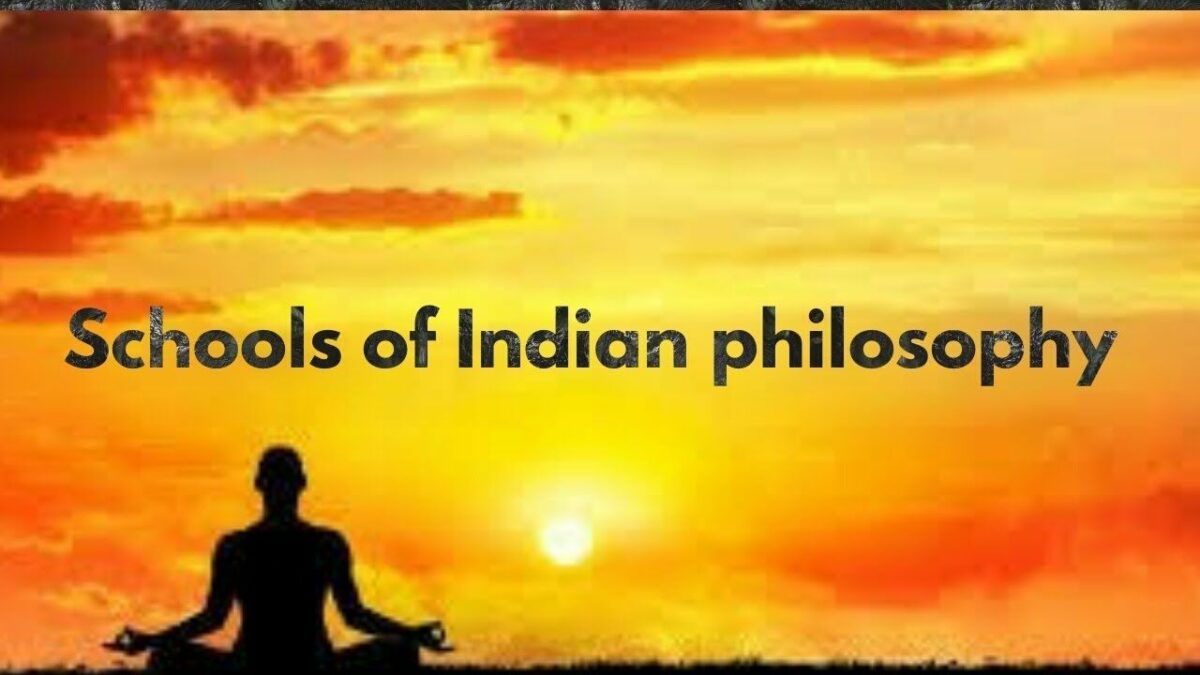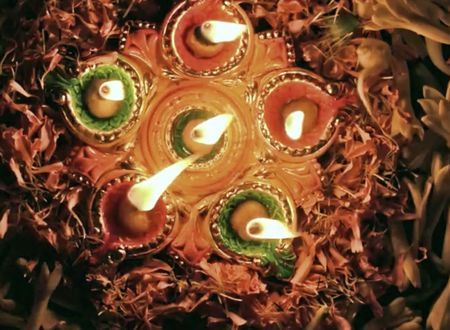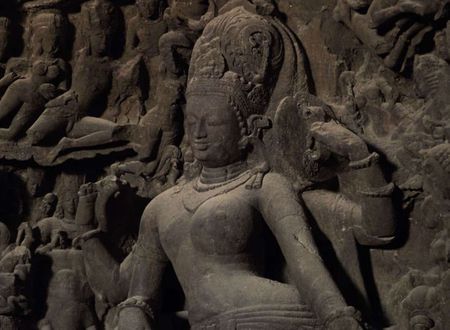The word nyāya literally means that by which the mind is led to a conclusion. We are led to conclusions by reason and by argument. Nyāyaśāstra, therefore, is sustained and systematic reasoning that leads to true knowledge — it provides tools for rigorous, critical-thinking, which, according to Nyāyaśāstra, is a key-component to attain niśreyasa, (Supreme Good). The oldest text available to us is Nyaya-sutras written by Akshapada Gautama. He is also considered the founder of the Nyaya School of thought.
The origin of this school can be traced back to the times when holding debates on the Upanishadic subject was considered more as an art and encouraged in the society. At that time, more than knowing the nature of reality, Nyaya focused on the art of argumentation and the philosophy of logic to provide the tools to gain valid knowledge about anything. The school of Nyaya attempts to define a system of logic as a way to truth and liberation. It is a discipline aimed at reversing the folly and mistaken notions that bind the soul. The focus here was to provide logical proof of the reality.
Nyayikas are realists. What this means is they believe they can perceive the reality of this world directly. They believe that not only they can look at the properties of what is outside, the underlying substratum can be also perceived directly. According to them, liberation can be attained by the means of attaining the right knowledge. Just as Samkhya asserts 25 classes of phenomena of knowable phenomena, Nayaya asserts 16 padarthas(the object that ought to be known). Out of sixteen padarthas, the first two padarthas, Pramāṇa (valid means of knowledge) and Prameya (objects of valid knowledge) make this a philosophical school. Nyaya proposed that liberation can be attained by gaining the right knowledge about these sixteen types of padarthas.
The next seven padarthas in the list are Saṃśaya (doubt), prayojana(purpose), Dṛṣṭānta (familiar instance), Siddhānta ( established tenet), avayava ( members), Tarka ( confutation), Nirṇaya ( ascertainment). A seeker starts with doubt and arrives at a conclusion in the end. To reach from doubt to conclusion, five steps of purpose, familiar instance, established tenants, members, and confutation, are involved. These seven padarthas give us the model of logic and are the bedrock of Indian logic, reasoning, and inference.
The last seven padarthas in the list are Vāda ( discussion), Jalpa ( wrangling), Vitaṇḍā ( caviling), Hetvābhāsa ( fallacy), Chala ( quibbling), Jāti ( sophisticated refutation), and Nigrahasthāna (point of defeat). These provide the art of philosophical debates and argumentation.
Pramāṇa :
According to Nyāya, there are four methods of gaining knowledge (pramāna): direct perception (pratyaksa), inference (anumāna), comparison or analogy (upamāna), and verbal knowledge or testimony (sabda). According to Nyaya, a seeker of truth follows the methods in a logical order. Firstly, one perceives something by means of contact with an object with external/internal instruments of senses. This direct perception becomes your hypothesis. Once, you layout the thesis, you try to contemplate the cause of the effect( your perception). By contemplation, you come up with Hetu( a reason), this reasoning has to pass an already validated rule or theory. You provide that previous rule as an illustration. Then, you apply the rule to your new reasoning and arrive at the conclusion. This conclusion once gets verbal testimony of an authority or a credible person can be accepted as valid knowledge. The pramāṇas are not simply the means by which individuals attain veridical cognition. They are also the final court of appeals in philosophical dispute. The pramanas were later included in all the major Indian philosophies to support their views.
Nyaya developed Pramana theory(Validation theory), and if any cognition is either verified or obtained through any of the four pramanas, then you can be assured of his truth. You can compare it to a modern thesis, a seeker starts with the hypothesis, provides inference, compare it with published research, and then comes to a definite conclusion. Then, he submits it to a panel of the scientific community who decides and either accepts his work or rejects it. Once the work is accepted, it becomes a part of valid knowledge upon which further scientific work can be developed. Nyaya was that panel of the scientific community for Indian philosophy that provided the framework through which we can validate and verify the truth of a certain work of cognition(Jnana). If a certain work of cognition, passes the valid means of cognition, it was recognized as truth. This was one of the most significant contributions of Nyaya to Indian philosophy.
Prameya:
After defining the right means of gaining knowledge, Nyaya further explains objects of knowledge which it calls Prameya. The prameyas listed in the Nyaya-Sutras are the soul or self (atman), body (sarira), sense organ(Indriyas), objects of sense (Artha), intellect or apprehension (buddhi), mind (manas), activity (pravrtti), fault or defect (dosa), transmigration (pretyabhava), fruit or result (Phala), pain (dukkha), and release (apavarga). Of these prameyas the self (atman) and release from pain (apavarga), are of special importance. According to the Naiyayikas, the self is the first prameya perceived, and the perception of the self leads to the perception and cognition of the other prameyas. Release or apavarga is in fact the ultimate goal of the Nyaya-Darsana and is characterized by a release of the self from pain and pleasure as a result of disengagement with embodied existence. There is no concept of eternal ananda or bliss in the Nyaya School of thought.
Features of Nyaya Philosophy :
- Unlike Sankhya, they believe in the existence of God and believe that his existence can be proved from the right means of knowledge.
- Jiva (Embodied soul) is separate from the Supreme Soul (God) and will remain eternally separated.
- There are infinite Jivas and they can desire and will as well as experience pain/pleasure as long as he is bound.
- Pain/Pleasure is the result of the attachment of jiva to the objects of the world.
- Ishvara can desire and will but does not undergo pain/pleasure and is responsible for the creation, maintenance, and destruction of the world. Ishvara is the instrumental cause of the universe and not the material cause.
- Nyayikas are the rigid believers of the theory of Karma. They believe karmas are the one that ties a jiva to a particular body-mind complex.
- Consciousness is not the inherent quality of Jiva, it appears conscious only when it comes in the contact of the body-mind complex. This is where Nyaya disagrees majorly with the Vedanta school of thought.
- The way to attain the right means of knowledge is through contemplation on the object for a prolonged period of time. When you contemplate on an object for a long time, its true nature comes forth, and that dissolute the bond between the object and the subject(jiva).
- Liberation as per Nyayikas is freedom from pain and pleasure. There is no concept of eternal ananda. So, liberation is viewed as the cessation of an undesired object ( pain/suffering). To achieve liberation, one has to let go of both pain as well as pleasure.
- Anumana ( inference) is given more importance in the Nyaya School of thought. It can even supersede the pramana of shabda( authority or Vedas). This is where Early Nyaya Philosophy disagrees with Vaisheshikas who gave more emphasis to Shabda pramanas
The notion of forms and universals in the Nyāya philosophy is highly reminiscent of Plato′s theory of ideas and forms. Just as Plato exalts the dialectic and ultimately arrives at the “Idea of the Good,” the Nyāya system also tries to arrive at some notion of ‘God’ through logic. Nyaya School of thought in this way is indispensable to an understanding of Indian knowledge systems as it provides the logical framework of Samsara, Mukti, and Karma.
P.S: Anyone who is interested in knowing more about the idea of liberation in the Nyaya School of thought may read the interesting paper published by Nilanjan Das.









Comments & Discussion
15 COMMENTS
Please login to read members' comments and participate in the discussion.